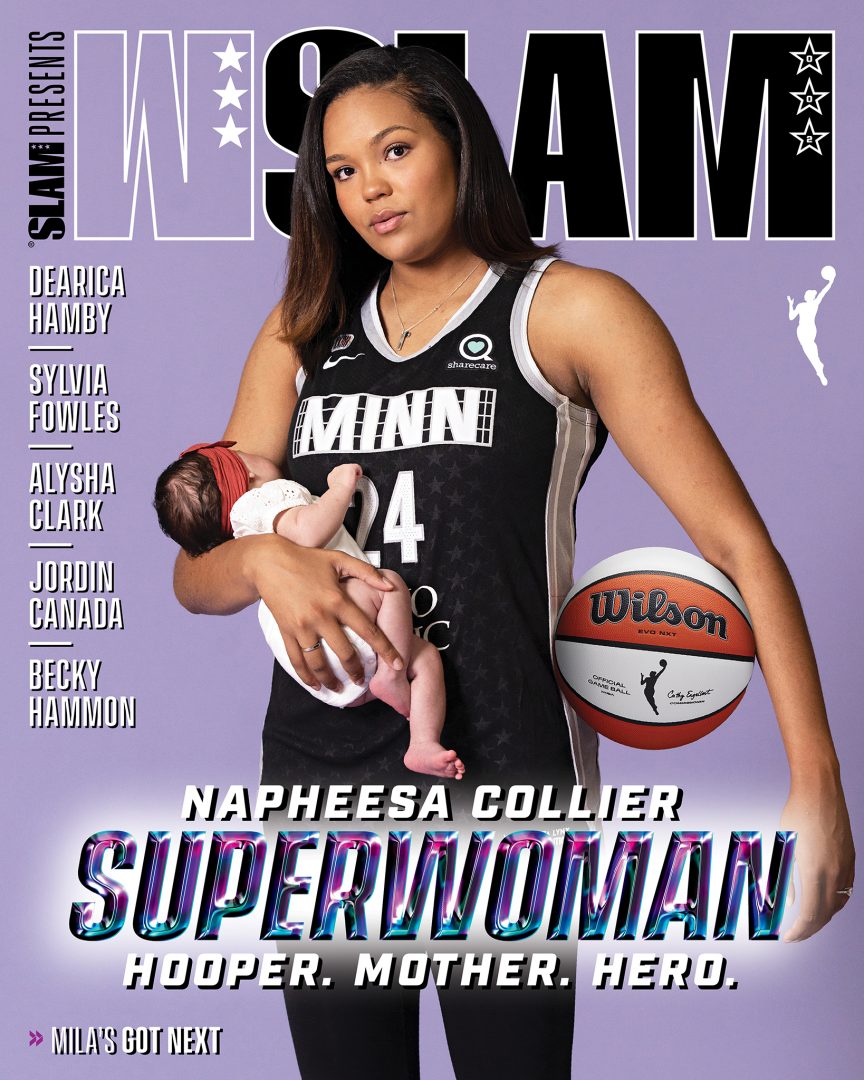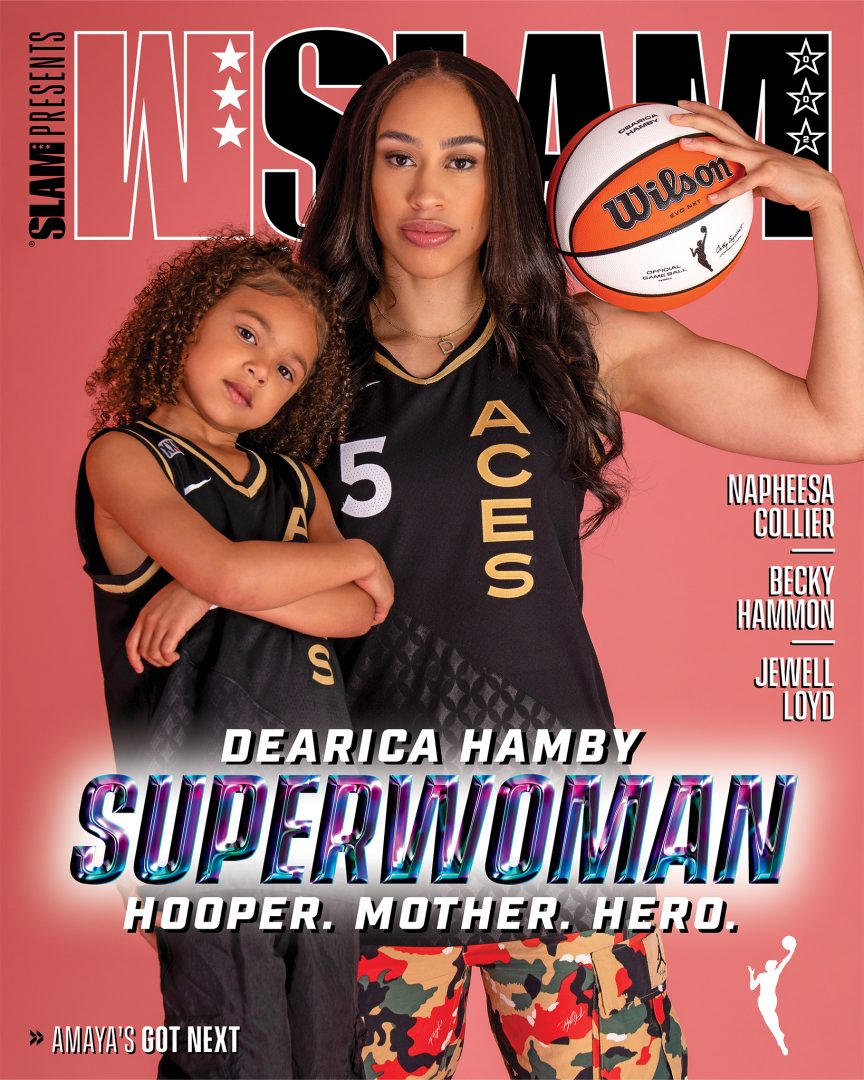Napheesa Collier and Dearica Hamby on Balancing Basketball with Motherhood While Inspiring the Next Generation
It was January of 1997. Sheryl Swoopes was at the height of her career. She had just won Gold in the 1996 Olympics and was set to make her debut in the inaugural WNBA season. Then she received news that would change her life. She was pregnant.
There was no playbook at that point in terms of what to do. “How could this happen?” Swoopes said in her 2013 documentary.
Would she still have a job come that summer? Was her playing career over? What comes next? All questions that women, not only in basketball, have feared in one way or another when it comes to becoming a mother.
She eventually told her agency, team and the WNBA, all of which supported her through that journey.
“I don’t know if anyone thought that was possible until [Sheryl] did it,” Houston teammate Tina Thompson discussed in the Swoopes ESPN documentary. “Once she did, then it became pretty normal.”
“The day [Sheryl] came back was a big deal,” Swoopes director Hannah Storm shared with The Atlantic in 2013. “No one had ever done that before—especially not on a team sport.”
Sheryl returned to the court just five weeks after giving birth and helped the Comets to their first WNBA championship that same year (the first of four consecutive titles in the years to come).
She created the playbook for the future of the League, one filled with dynamic women who have dreams of having both a career and a family.
WSLAM 2 is out now featuring Napheesa Collier and Dearica Hamby.
Do you remember when you first realized your mom was a superhero? When you’re little, it’s difficult to grasp exactly how much our mothers do for us. When you get a bit older, the teen angst starts kicking in and clouds our ability to see anything of reason. And when you’re older, you start to understand just how much our moms sacrifice for us.
I remember I was always a dad’s girl. I loved basketball and played lots of sports. It bonded me and my dad. Didn’t seem quite fair to the woman who carried me for nine months to be a dad’s girl, but nonetheless, when I got older, I started really comprehending just how much she did for me. I learned about her hardest moments. I started realizing that there were likely things I’d never know about and began to understand the struggles she went through personally while doing her best for me. It’s what moms do.
They get you to practice, stay up to make you dinner, check on your schoolwork, teach life lessons and do their best to protect you from the world. All while dealing with their own lives. They hold it down when it seems nearly impossible.
Imagine balancing all those things on top of being a professional athlete. A job that at one point felt impossible to maintain once you became a mother.
Nearly 26 years after Swoopes gave birth to her son Jordan, there are two young moms in the WNBA at different stages of motherhood for whom Sheryl set the stage.
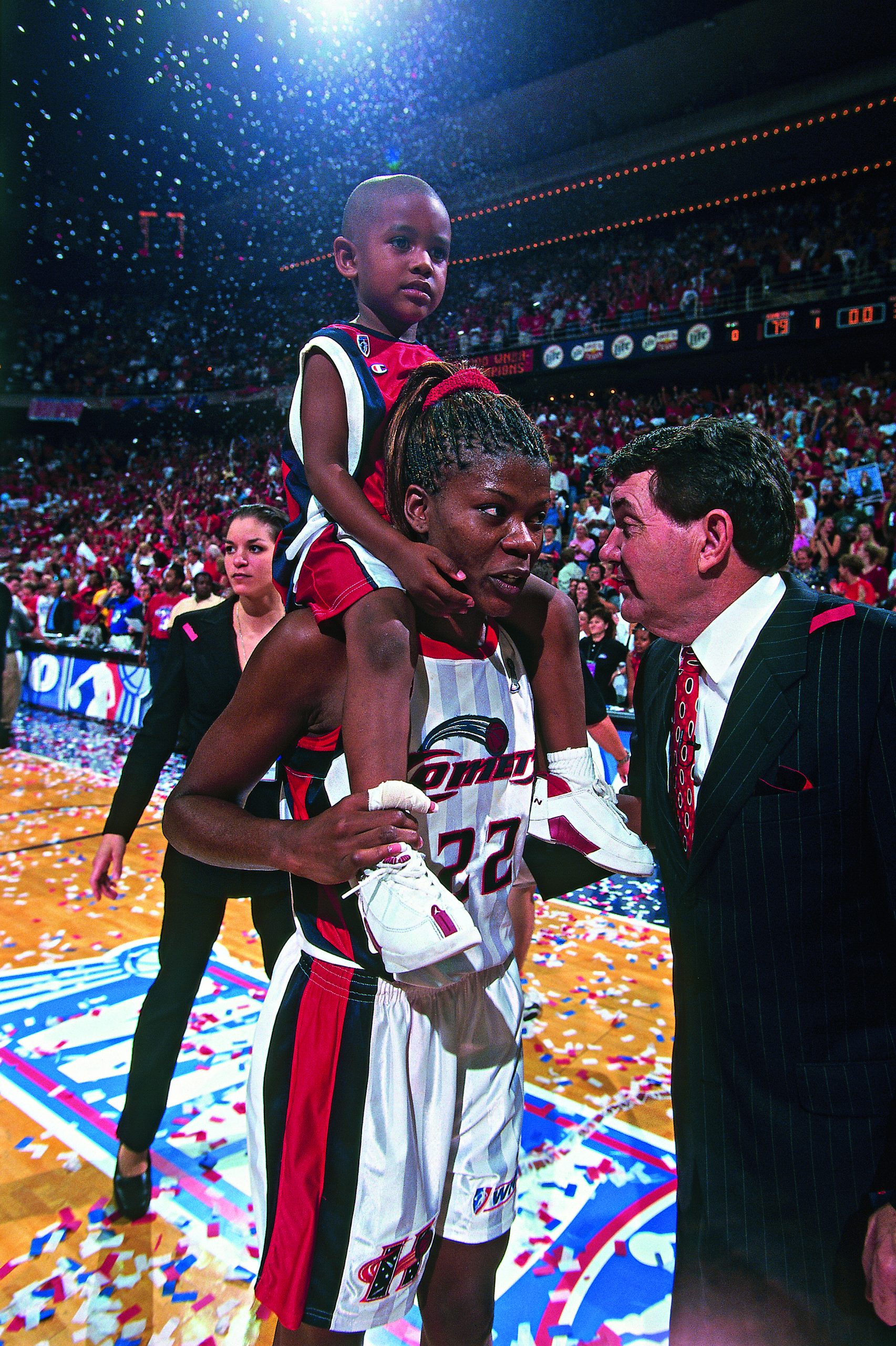
Dearica Hamby is in her eighth WNBA season, a mother to Amaya and a two-time Sixth Woman of the Year winner. Napheesa Collier, who was the 2019 Rookie of the Year, is now in her fourth WNBA season and just gave birth to 1-month-old Mila.
Two moms on two journeys that were initially unexpected.
Dearica had just averaged 6.1 points per game in her first season, with about 17 minutes of playing time per game, and she was ready to prove herself in year two when she found out her life was about to change.
How am I going to play basketball? How am I going to tell my coaches? Dearica thought to herself after she found out she was pregnant.
“I was in my second year. I had a decent first year until my injury. I felt like I was back in redemption mode the second year, and I knew that this was a possibility that I was going to have to sit out once I told my coaches and the organization that I was expecting,” she tells WSLAM.
Napheesa’s journey has been a little different. She came into the League with a splash, averaging 13 points a game and taking home the ROY award. Just as her third season wrapped up, she took a test after being a few weeks late when the tiny plus sign appeared.
“I feel like I didn’t have a lot of emotions at first because it’s just thing…I don’t know. It was just such a huge thing,” Napheesa shares. “That your life is going to change forever when that happens. So, it was just processing that. One of my first thoughts was, OK, I have to call my coach because I’m not going to be able to play, at least in the beginning of the season next year.”
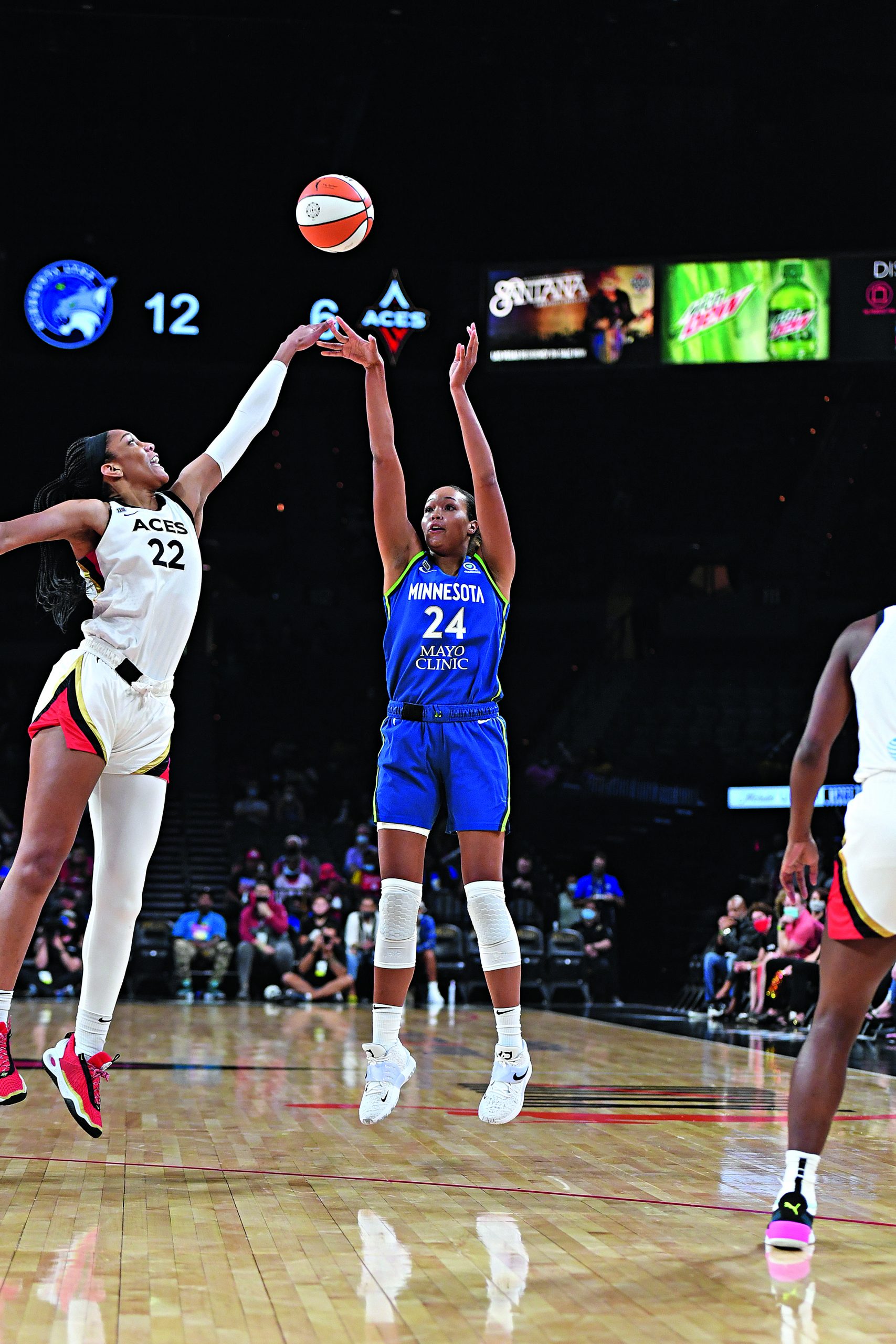
It’s that exact thought process that led WNBPA President Nneka Ogwumike and the rest of the council to negotiate the elevation of resources for mothers of the League. Those new resources include a full salary while on maternity leave, a new annual child care stipend of $5,000, two-bedroom apartments for players with children and workplace accommodations that provide a comfortable place for nursing mothers, to name a few.
“I am so thankful that I came into the League when I did, because it was right on the tails of the new CBA, which gives so many things to new mothers that we didn’t have before,” Collier says. “You get so many things that allow you to come back and be a working mom, that the men obviously don’t have to worry about.”
These changes have been vital in empowering the women of the League to pursue their dreams of a career, and their dreams of having a family. Dreams that society has doubted.
There’s an archaic mentality that women can’t be good mothers and top-tier professionals. It’s a mentality that’s caused a lot of the fear and anxiety around pregnancies like Sheryl’s in ’97, to now with Phee and Dearica.
“I think it exists because women are naturally caretakers and nurturers, and when you have a kid, you want to give all of that to the kid. I think there’s this fear that if I’m emotionally invested in this, I can’t also emotionally invest in basketball. But that’s just false,” Hamby says. “Personally, for me, I come to work, I do my job for the time allotted that I’m supposed to do my job, and then I go home and I’m a full-time mommy. I can separate the two.”
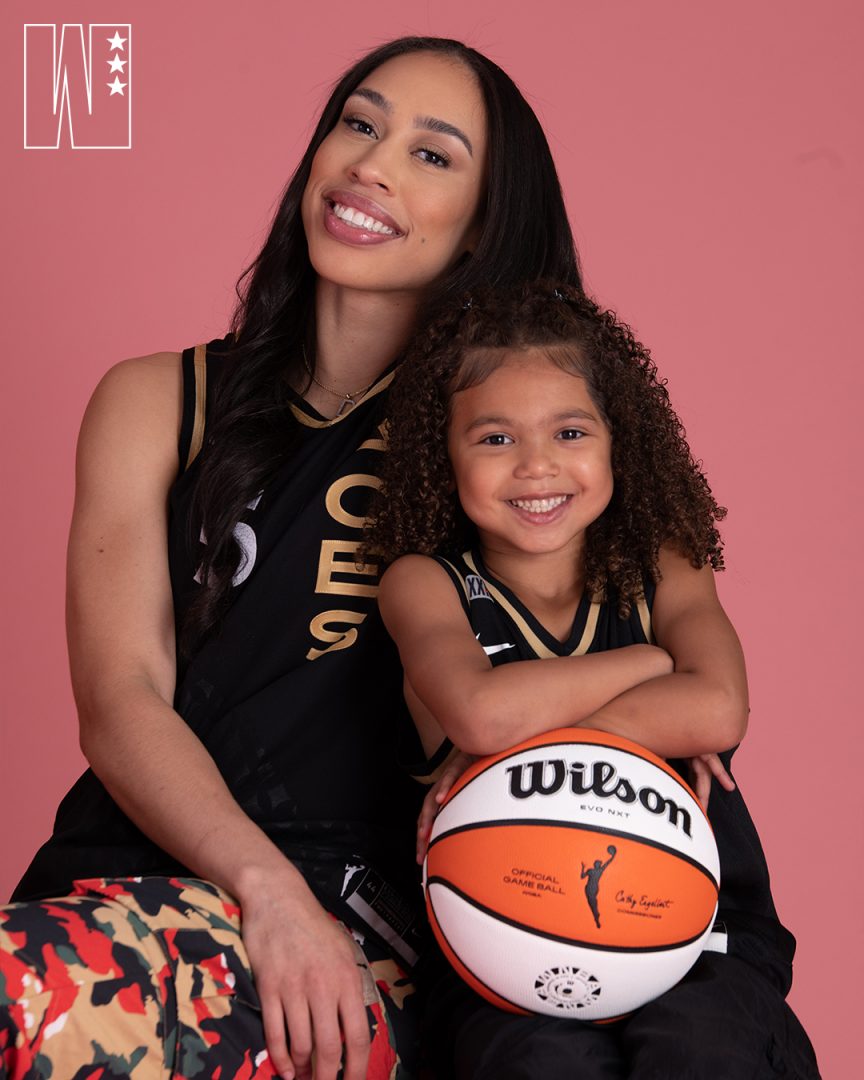
The reality of working mothers extends well beyond the hardwood. Who could forget Beyoncé’s 2011 VMA performance of “Love on Top,” when, after holding nothing back as she poured her heart and soul into every word, B dropped the mic and hugged her stomach, revealing to the world that she was pregnant with her first child. Keep in mind, too, that she was wearing heels for her performance. Yet another example that women can truly do it all.
For every working woman, there are a ton of questions faced before and after giving birth. How much time can I take off? Will my boss be OK if I want to take some extra time? Will my job still be there for me when I come back? For professional athletes, one of the biggest questions on their minds is a scary one: Will I be able to come back and play at the same level as before?
Pregnancy naturally changes women’s bodies, immensely. Weight fluctuates, hormones increase, breast size changes, post-birth back pains are possible, just to name a few. The road back is not easy, but it’s not impossible.
“I gave birth to her [Amaya] February 5, which was three weeks prior to my original due date,” Dearica recalls. “Those extra three weeks saved me, and I was able to get in shape in time for the season.”
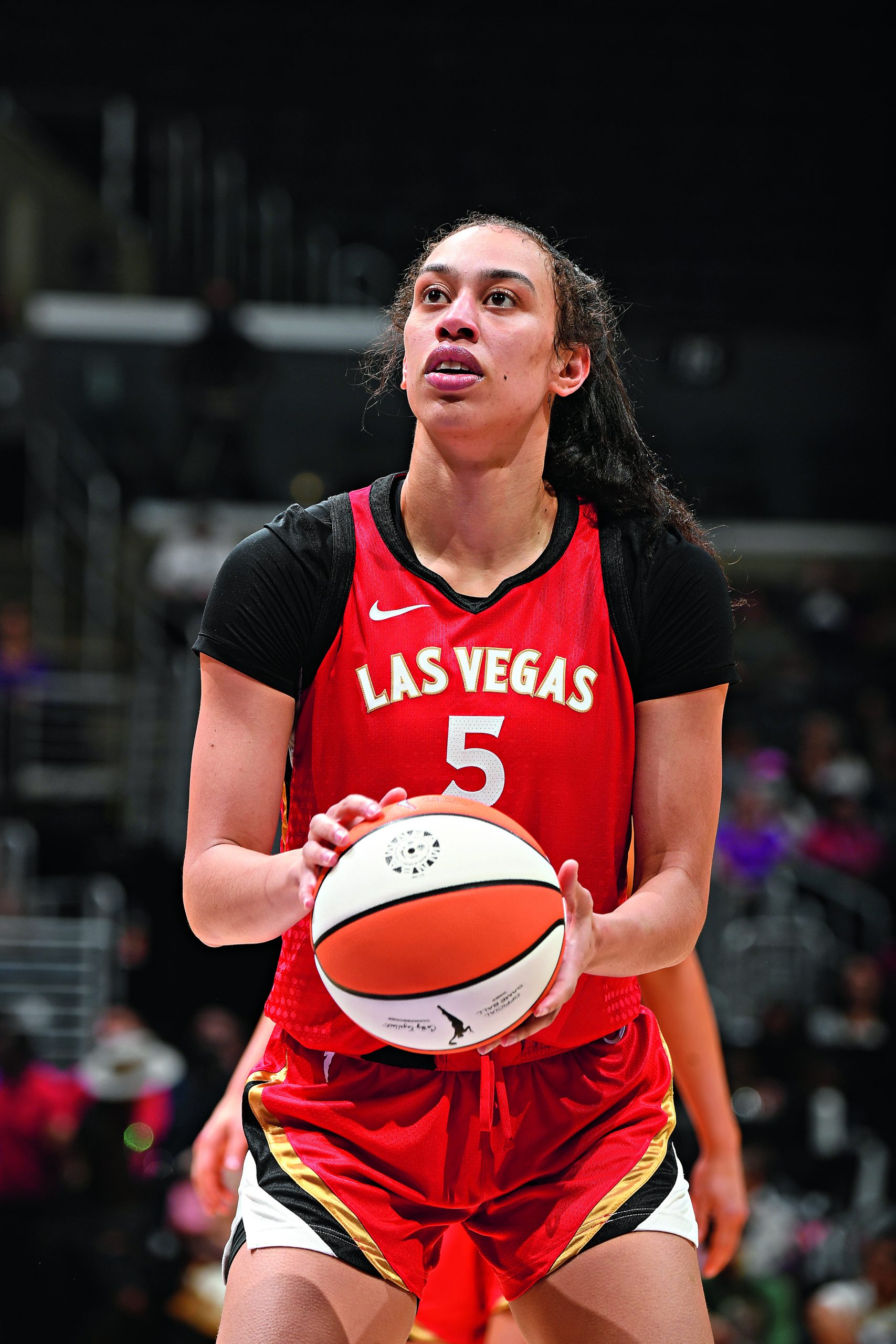
Returning to the court just about six weeks after giving birth, Dearica came back even better than before. She averaged 9 ppg, solidifying her spot on the then-San Antonio Stars roster, and in the seasons since has continued to elevate her game.
“The most difficult part was training and thinking I would be OK from being away from her. I nursed, and so when I was gone, I really missed her,” the Aces star says. “When I was at workouts, it’d be like, Alright, hurry up and do this hour and a half workout. I don’t think I changed my clothes in time. I was sprinting back home to get to her. I just wanted to hold her.”
The sacrifices she made to make it work led her to some of her best seasons and two Sixth Woman of the Year awards. Now she’s on the No. 1 team in the League, a team that looks like the favorite to win a championship.
Napheesa is just at the beginning of her comeback journey. Her daughter, Mila Sarah Bazzell, was born on May 25th of this year, and just a few weeks out, she’s now eyeing her return to the floor.
“I plan to approach my comeback really [with my] feet hitting the ground, running, trying to get back as soon as I can,” Collier says. “Especially because Sylvia Fowles is one of my favorite people ever. I would love to be able to play a couple games with her if I can. Since this is a short season, time is not on my side, but I really want to push my body as much as I can while still being healthy.”

There’s no doubt in our minds that Phee will return back and better than ever. Sheryl showed us the blueprint, and since then, Candace Parker, Skylar Diggins-Smith, Tianna Hawkins, Bria Hartley, DeWanna Bonner and many more have continued to inspire.
Dearica is following their lead, and Phee’s got next. It’s that momma strength. That little bit extra that these women have.
“Honestly, I think it’s this mom [thing] that elevates players after they give birth, in my opinion,” Hamby says. “People will tell you all the time, I’m a different player than I was before I gave birth to Amaya. Just the toughness that I play with and the hunger and the drive and the heart that I play with, I think it comes from giving birth. You become a mom and it’s different.”
It also takes a village to raise a child, and one of the most beautiful things about the WNBA is how there’s a support system of 144 women who are there for them. To help them raise their children and to be there for one another.
We see that with Amaya, whether it’s her prank wars with the Aces’ Kelsey Plum or her role as the unofficial team mascot. She’s always on the sidelines with a jersey cheering on her mommy and her friends (Hamby’s teammates). It’s evident just how special Amaya and Dearica’s bond is, but it’s even more so in the moments we don’t see.
“Her teacher left me a message a few weeks ago and I happened to read it right before the game, which probably was a bad idea, but she said, Amaya’s so proud of you and she talks about you. You should see the way she glows when the students ask about you,” Dearica says with tears slowly welling in her eyes. “I think sometimes I’m hard on myself because I feel bad during the season that I’m not with her as much. For her teacher to say that and send me that, it meant a lot.”

It may be tough to not share as many mom-daughter moments as Dearica would like, but 5-year-old Amaya loves that her mom is a WNBA superstar. She gets to see what she could aspire to be one day and even share that with her friends at school.
Now Napheesa has the same opportunity to share the game that she loves with her newest No. 1 fan.
“I’m excited for the experiences that we’re going to have together,” the former ROY says. “Obviously, I hope she likes to play sports. But if she doesn’t, it’d be so cool to see what she’s interested in. Does she want to play an instrument? What’s she going to be like? What are her interests going to be? Maybe she’ll introduce me to new things that I’ve never tried before.”
That’s the beauty of motherhood. The journey, the unknown and the things you get to experience together for the first time.
For Dearica and Napheesa, it’s not always going to be easy. There are going to be hard times and setbacks, but that’s not going to stop them from doing what they have to do to create the best life for their daughters. They’ll hold it down through those tough times and show their daughters that there are no limitations to what a woman can do.
And to Mila and Amaya, you may not realize it yet, but your moms are superheroes. Not just to you, but to women everywhere.
Napheesa Collier portraits by Lawrence Bryant, Dearica Hamby portraits by Alex Woodhouse // Action photos via Getty Images.
Napheesa’s hair: Cameron Myers, makeup: Tara Lowery // Dearica’s hair: Sabrina Jackson, makeup: Heather Bates
